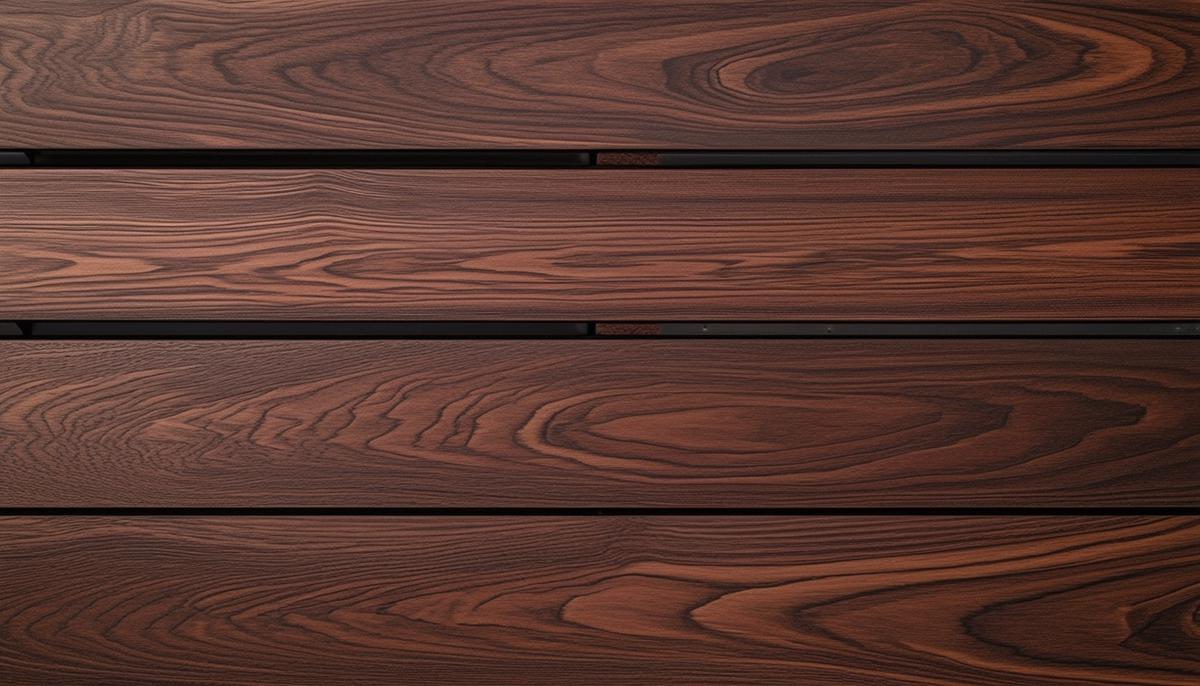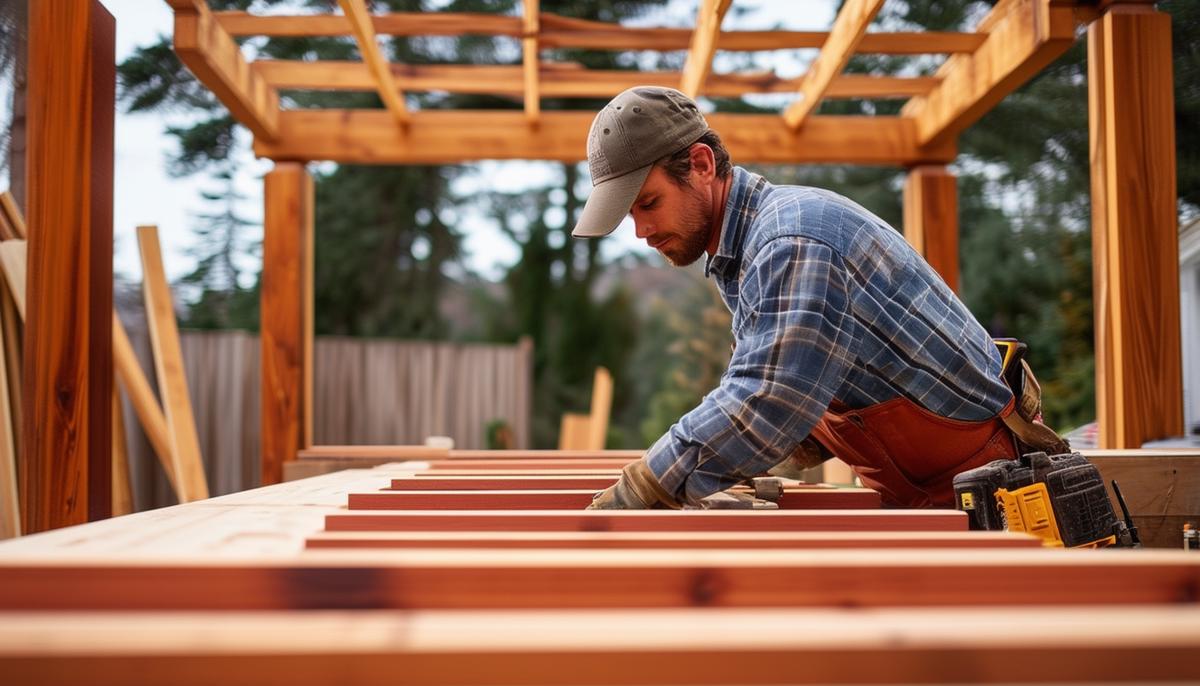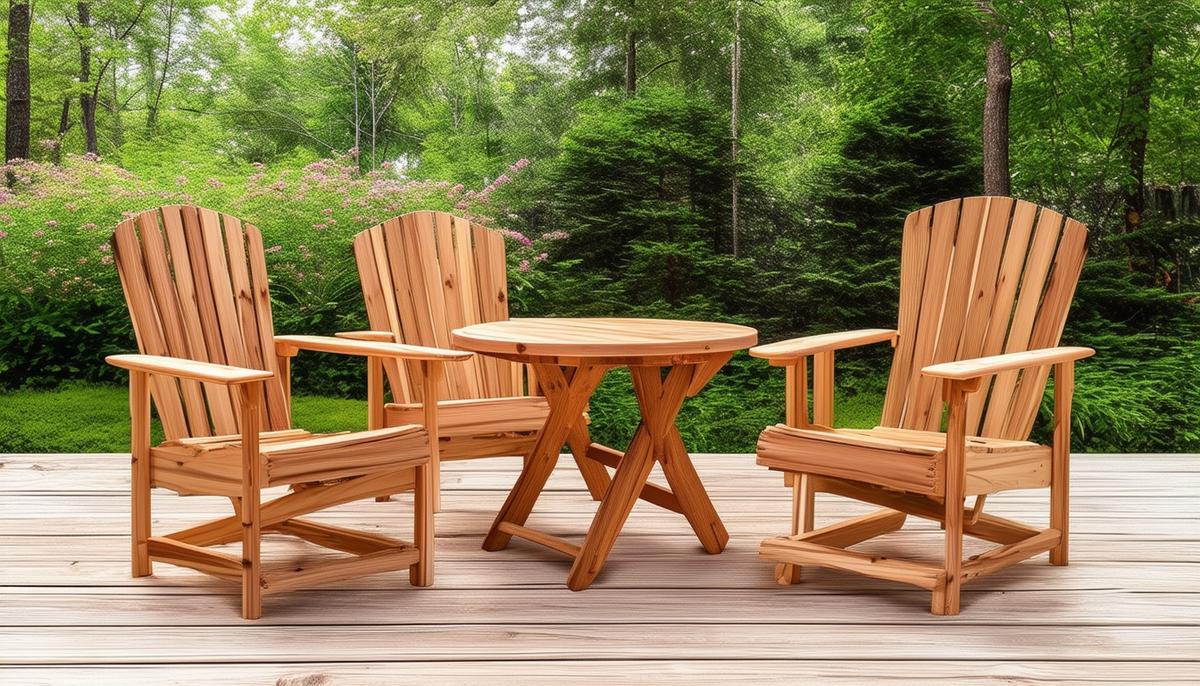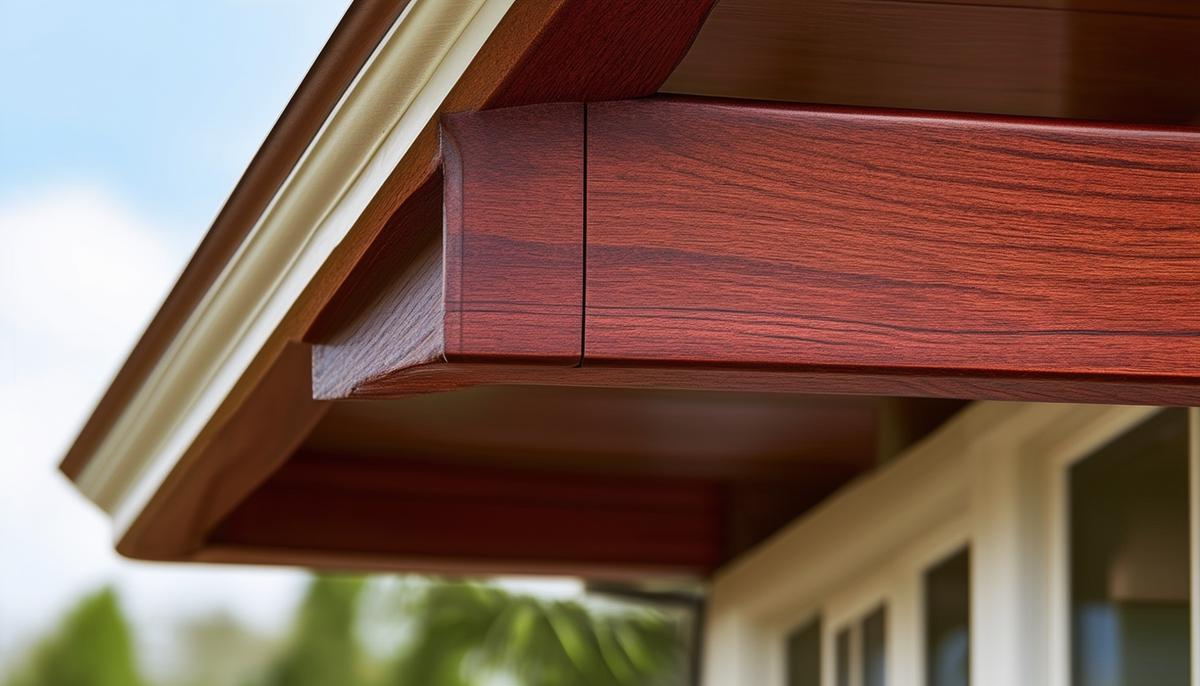1. Ipe (Brazilian Walnut)
Ipe, also known as Brazilian Walnut, stands as a pinnacle of durability for outdoor carpentry. Its exceptional density and natural oils provide robust protection against insects and rot, making it an ideal choice for decks and outdoor structures. Ipe offers a visual feast with its range of colors from reddish to blackish brown, complemented by a natural luster.
Key features of Ipe include:
- Exceptional durability with structures lasting over 35 years
- High resistance to scratches and heat
- Impressive Janka hardness rating of 3,510 lbs
- Challenging to work with due to its density
While Ipe demands effort during construction due to its density, the long-term benefits are substantial, offering structures that can withstand decades of outdoor exposure.

2. Redwood
Redwood presents a compelling blend of elegance and practicality for outdoor carpentry projects. Naturally resistant to pests and moisture, its straight grain pattern enhances structural integrity. Redwood's lightweight nature is a boon for builders, especially when constructing decks or trellises.
Notable characteristics:
- Lightweight yet durable
- Dimensionally stable, resisting warping under pressure
- Rich red tones add visual appeal
- Easy to handle during construction
The combination of these features makes Redwood an excellent choice for those seeking a balance between workability and longevity in their outdoor structures.

3. Cedar
Cedar's reputation in outdoor carpentry is well-earned, thanks to its resilience and practical benefits. Its natural insect-repelling properties and resistance to decay make it a top contender for outdoor structures.
"Cedar is renowned for its aromatic scent, natural insect-repelling properties, and resistance to decay."
Key advantages of Cedar include:
- Lightweight and easy to work with
- Smooth cutting and shaping for a professional finish
- Versatile for various projects, from patio furniture to pergolas
- Natural oils that help preserve the wood
Cedar's combination of durability and natural charm makes it a versatile choice for a wide range of outdoor carpentry projects.

4. Teak
Teak holds a premium position in outdoor carpentry, celebrated for its durability and elegance. Its high oil content is the secret behind its natural resistance to water, decay, and insects.
Key features of Teak:
- Exceptional stability in harsh weather conditions
- Resistance to warping and cracking
- Golden to medium brown hues
- Long-term investment value
While Teak requires some skill to work with and comes with a higher price tag, its longevity and aesthetic appeal make it a worthwhile investment for outdoor furniture and decking projects.
5. Mahogany
Mahogany brings sophistication to outdoor carpentry, offering a perfect balance of durability and beauty. Its fine grain and rich reddish-brown color create visually appealing structures, while its moderate density provides the necessary strength for outdoor use.
Advantages of Mahogany include:
- Resistance to rot and insects
- Suitability for outdoor furniture and trim
- Relatively easy to work with
- Allows for detailed craftsmanship and smooth finishes
While not as tough as some hardwoods, Mahogany's combination of workability and weather resistance makes it an excellent option for those seeking a balance of form and function in their outdoor projects.

When selecting materials for outdoor carpentry, it's crucial to consider the unique properties of each wood. From Ipe's unmatched strength to Mahogany's elegant workability, each option offers distinct advantages tailored to different project needs and skill levels. The right choice can ensure not only the longevity of your creations but also enhance the aesthetic appeal of your outdoor space.
- Wood Database. Black Locust.
- Armstrong J. Wood Blinds Direct. Acacia Wood for Outdoor Furniture.
- Lemler B. Douglas-fir in Outdoor Carpentry.
- Aune P. North American Cedars for Outdoor Use.
